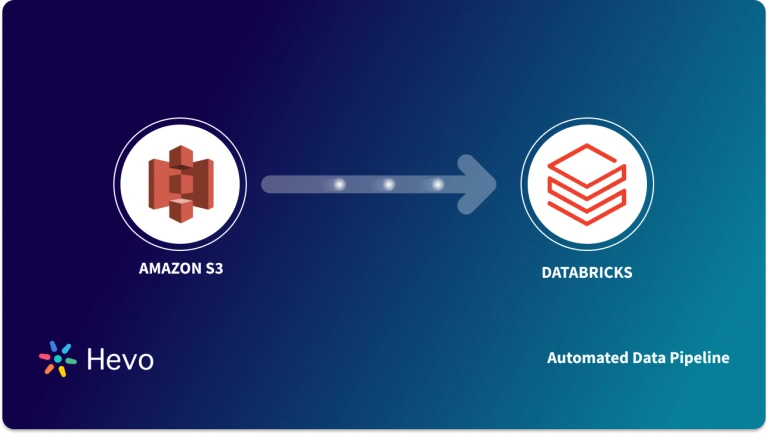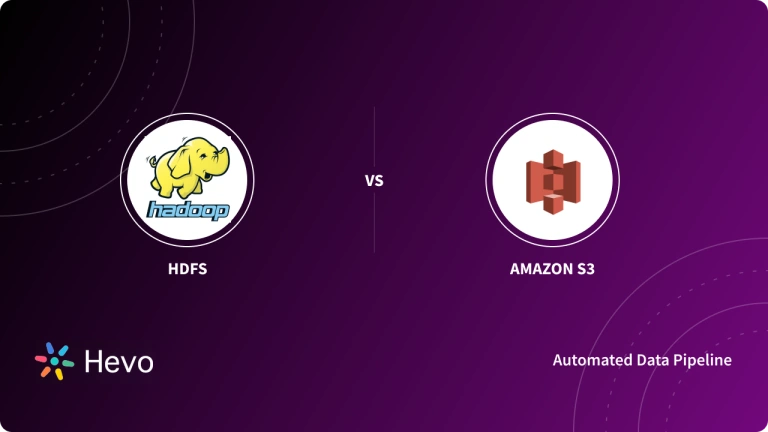The popularity of the cloud as a data storage platform has increased. The reason is that individuals and companies have realized the benefits of storing their data in the cloud. Due to this, most companies have moved their data from on-premise databases to cloud storage systems. The choice of the data storage medium is key to any organization because it determines the query processing speed and the costs to be incurred. Cloud storage systems are obviously cheaper for data storage because they don’t burden their users with the responsibility of server maintenance.
Amazon Web Services (AWS ) is one of the leading providers of cloud storage services. It offers fully managed systems that can service the database needs of businesses. Two of its most popular products are Redshift and S3. In this article, we will be discussing the AWS products S3 vs Redshift so that you can know the right one to choose for yourself or your business.
Table of Contents
What is Amazon S3?
Amazon Simple Storage Service (Amazon S3) is a high-speed, web-based, scalable Cloud storage service. It was designed and developed for backing up and archiving data and applications on AWS.
S3 is a very helpful product since it helps its users to store and retrieve data from any location on the web, any time they want. This is done via the AWS Management Console which provides an easy-to-use web interface. For instance, Amazon relies on S3 to run its websites throughout the world. Its popularity is growing at a high speed. You can learn more about Amazon S3 from the official documentation.
Key Features of Amazon S3
The key features of Amazon S3 are as follows:
- Storage Management: With S3 bucket names, object tags, prefixes, and S3 Inventory, users have access to a wide range of functionalities such as S3 Batch Operations, S3 Replication, etc., that help them categorize and report their data.
- Storage Monitoring: Amazon S3 houses various functionalities such as AWS Cost Allocation Reports, Amazon CloudWatch, AWS CloudTrail, S3 Event Notifications that enable users to monitor and control how their Amazon S3 resources are being utilized.
- Storage Analytics: Amazon S3 houses two services called S3 Storage Lens and S3 Storage Class Analysis that can provide users with insights on data being stored. S3 Storage Lens delivers organization-wide visibility into object storage usage, activity trends and makes actionable recommendations to improve cost-efficiency and implement the best practices for data protection. Amazon S3 Storage Class Analysis analyzes storage access patterns to help users decide when they should implement transitions for the data into the right storage class.
- Security: Amazon S3 offers various flexible security features to ensure that only authorized users have access to the data. Amazon S3 provides support for both Client-side and Server-side encryption for data uploads.
What is Amazon Redshift?
Amazon Redshift is a petabyte-scale, managed cloud data warehouse service that makes the larger part of the AWS cloud platform. Amazon Redshift provides you with a platform where you can store all your data and analyze it to extract deep business insights.
Traditionally, businesses had to manually make sales predictions and other forecasts. Amazon Redshift does the largest part of the work of analyzing the data so that you can focus on something else. It gives you an opportunity to analyze your business data using the latest predictive analytics. This way, you can make smart decisions that can drive the growth of your business. You can learn more about Amazon Redshift from the official documentation.
Key Features of Amazon Redshift
Here are some key features of Amazon Redshift:
- Processing in Parallel: Parallel processing is used in conjunction with a distributed design strategy that leverages multiple CPUs to process huge datasets.
- Tolerance for Mistakes: Organizations may rely on the Data Warehouse’s Fault and Error Tolerance to ensure continuous operation when performing mission-critical processes in the Cloud.
- End-to-End Encryption: To ensure users’ privacy and security, all data handled on the Cloud is encrypted. There are numerous methods for distributing keys for encrypted data.
- Maximum Performance with Machine Learning (ML): Amazon Redshift offers robust Machine Learning (ML) capabilities with high throughput and speed.
- SageMaker Help: It allows users to construct and train Amazon SageMaker models for Predictive Analytics utilizing data from their Amazon Redshift Warehouse, making it a must-have for today’s Data Professionals.
Hevo enables seamless data migration from various sources, including Amazon Redshift, by automating the entire ETL (Extract, Transform, Load) process. With Hevo, you can effortlessly move data into Redshift, ensuring it is transformed and ready for analysis in real-time without the need for manual coding or maintenance.
What Hevo Offers:
- No-Code Interface: Easily set up data pipelines with minimal effort.
- Automated Data Integration: Connects to 150+ sources and loads data to Redshift.
- Real-Time Sync: Ensures your data is always up-to-date.
What are the key differences between AWS S3 Redshift?
Maybe you are stuck on whether to choose Redshift or S3 for data storage. Determining the best data storage solution between these two options can be a challenge. Below are the key differences between these two cloud storage options:
- S3 vs Redshift: Purpose
- S3 vs Redshift: Cost
- S3 vs Redshift: Categories
- S3 vs Redshift: Ease of Setup
- S3 vs Redshift: Ease of Use
- S3 vs Redshift: Ease of Maintenance
- S3 vs Redshift: Integration Tools
- S3 vs Redshift: Clients
1) S3 vs Redshift: Purpose
Amazon S3 offers an unlimited and flexible data storage solution while Redshift is a good platform for analyzing structured data. This means that the two are meant to perform completely different functions.
Amazon Redshift comes with the right tools for doing analysis on large and complex datasets. Amazon S3 provides a simple object storage platform.
2) S3 vs Redshift: Cost
S3 provides its users with a cheaper and more efficient data storage solution than Amazon Redshift. The pricing for Amazon Redshift is charged on an hourly basis. They allow you to start small at $0.25 per hour and then scale up to thousands of concurrent users and petabytes of data. Redshift gives you an opportunity to grow both the storage and compute capacity.
With Amazon S3, you only pay for what you use. The storage costs depend on the size of the objects that you store, the storage class, and the period of time for which the object is stored. The minimum storage attracts a cost of $0.023 per GB.
3) S3 vs Redshift: Categories
Amazon Redshift is a Columnar Database and a Data Warehouse developed to support analytical processing in the cloud. With columnar storage, most analytical operations that require aggregation and grouping operations on data columns are faster and more efficient than with the traditional relational database management systems (RDBMSs).
On the other hand, Amazon S3 is categorized as object storage. It provides an alternative to raw storage in the cloud. It also offers the benefits of data redundancy, data durability, and the ability to move or archive data to a cheaper storage class.
4) S3 vs Redshift: Ease of setup
It is easy to set up and use Amazon Redshift. On the other hand, Amazon S3 users have found it a bit difficult to set up and start using the platform for object storage. The reason is that it takes some time for one to organize buckets and folders in S3 and start using them.
5) S3 vs Redshift: Ease of use
Most users have found Amazon S3 easier to use and do business with than Amazon Redshift.
6) S3 vs Redshift: Ease of Maintenance
When it comes to maintenance and administration, Amazon Redshift is more efficient than Amazon S3.
7) S3 vs Redshift: Integration Tools
Amazon Redshift integrates with tools like MySQL, SQLite, Metabase, Amplitude, Oracle PL/SQL, and AWS Glue.
Amazon S3 integrates with tools like Travis CI, Gatsby, Auth0, Fastly, Papertrail, and AWS CodePipeline.
8) S3 vs Redshift: Clients
Amazon Redshift is used by companies such as Amazon, Lyft, Delivery Hero SE, Nubank, Bitpanda GmbH, and Coursera.
Amazon S3 is used by companies like Airbnb, Netflix, Pinterest, Spotify, Amazon, and Udemy.
What are the Limitations of AWS S3 and Redshift?
The following are the cons of using Amazon Redshift:
- Doesn’t enforce uniqueness. Amazon Redshift doesn’t provide means to enforce data integrity through unique indexes. This means that the responsibility of enforcing uniqueness lies solely with the user.
- Not suitable for use as a live app database. Although Redshift queries run faster even on larger datasets, it doesn’t offer an adequate speed for live web apps.
The following are the major limitations of Amazon S3:
- Its web console can be difficult to use, especially for beginner users.
- It’s expensive to download data from Amazon S3.
- Amazon S3 offers a complex pricing schema.
Conclusion
in this article, you’ve learned more about Amazon S3 and Amazon Redshift. You’ve also learned the differences between Amazon Redshift and Amazon S3 with the help of 8 key aspects.
Integrating and analyzing your data from a huge set of diverse sources can be challenging, this is where Hevo comes into the picture. Hevo Data is a No-code Data Pipeline and has awesome 150+ pre-built integrations that you can choose from. Hevo can help you integrate your sales data from numerous sources and load them into a destination Warehouse to analyze real-time data with a BI tool and create your Dashboards. It will make your life easier and make data migration hassle-free. It is user-friendly, reliable, and secure.
FAQ
Difference between S3 and Redshift?
Amazon S3 is an object storage service for storing and retrieving any amount of data, while Amazon Redshift is a fully managed data warehouse designed for fast query performance on large datasets.
Does Redshift work on S3?
Yes, Redshift can directly query data stored in S3 using the Redshift Spectrum feature, allowing users to analyze data without loading it into the warehouse.
Is Redshift faster than Snowflake?
Performance can vary based on specific use cases, but Redshift may be faster for complex queries due to its optimized architecture, while Snowflake offers dynamic scaling and efficient storage that can also yield high performance.









